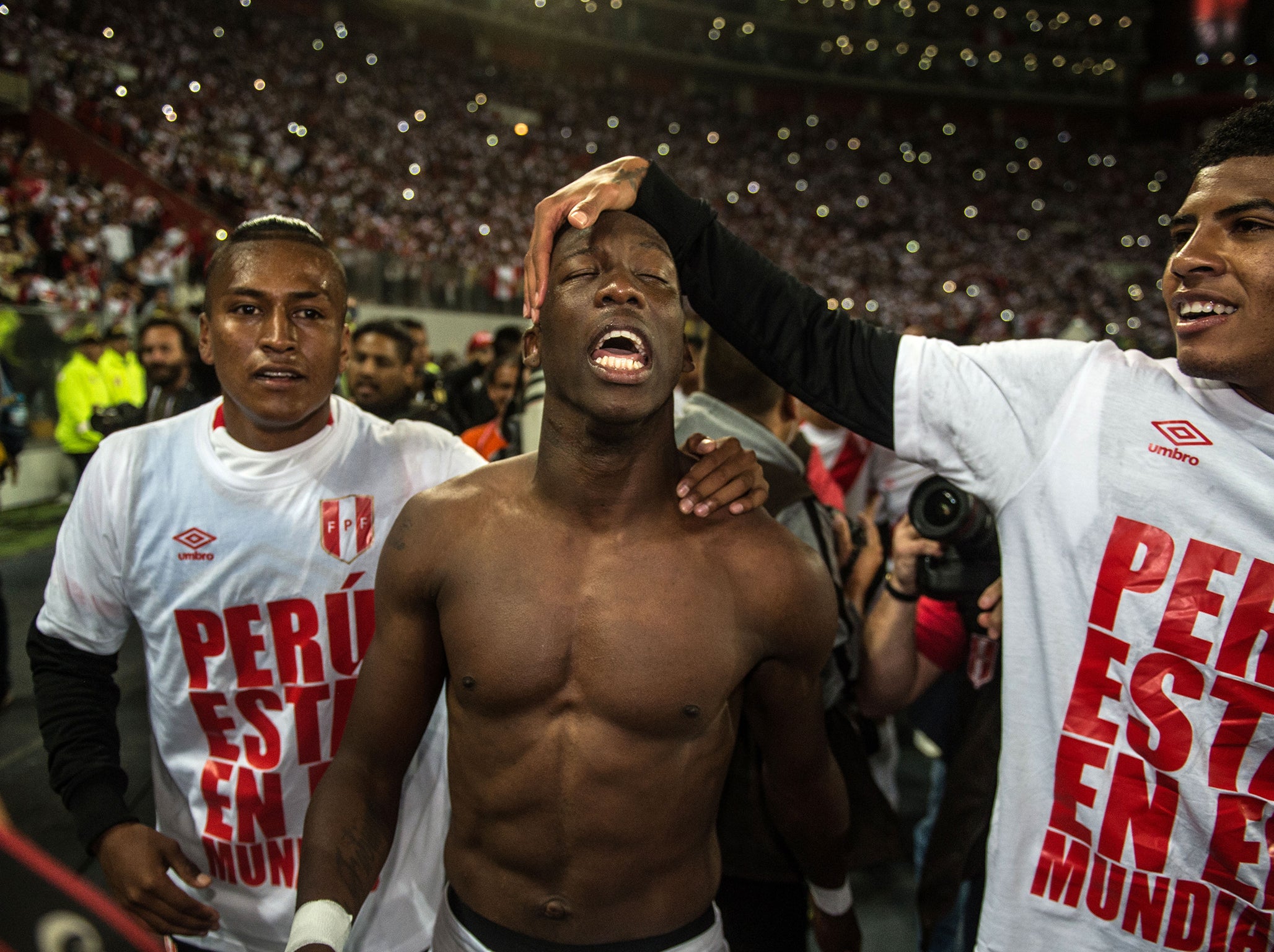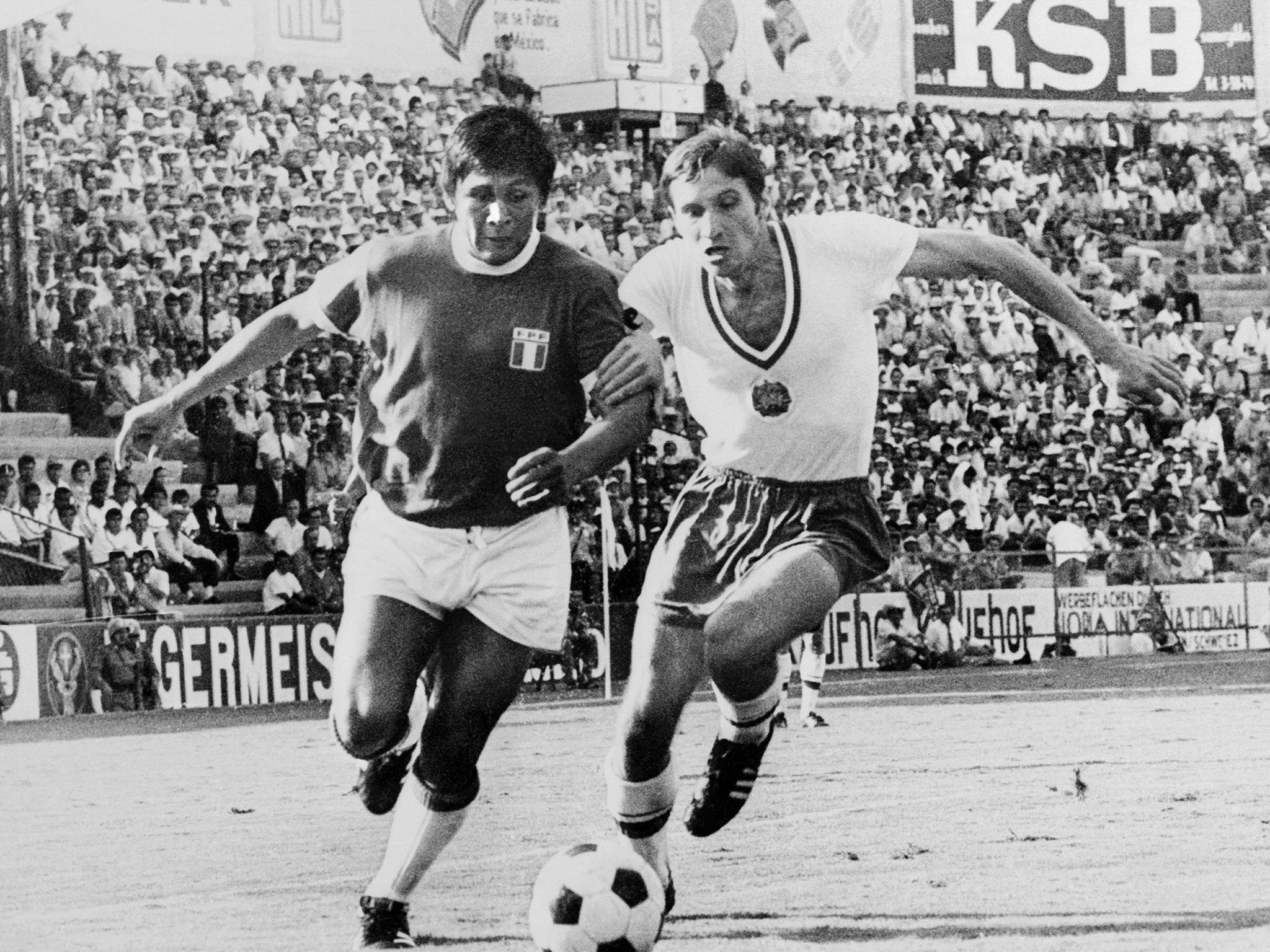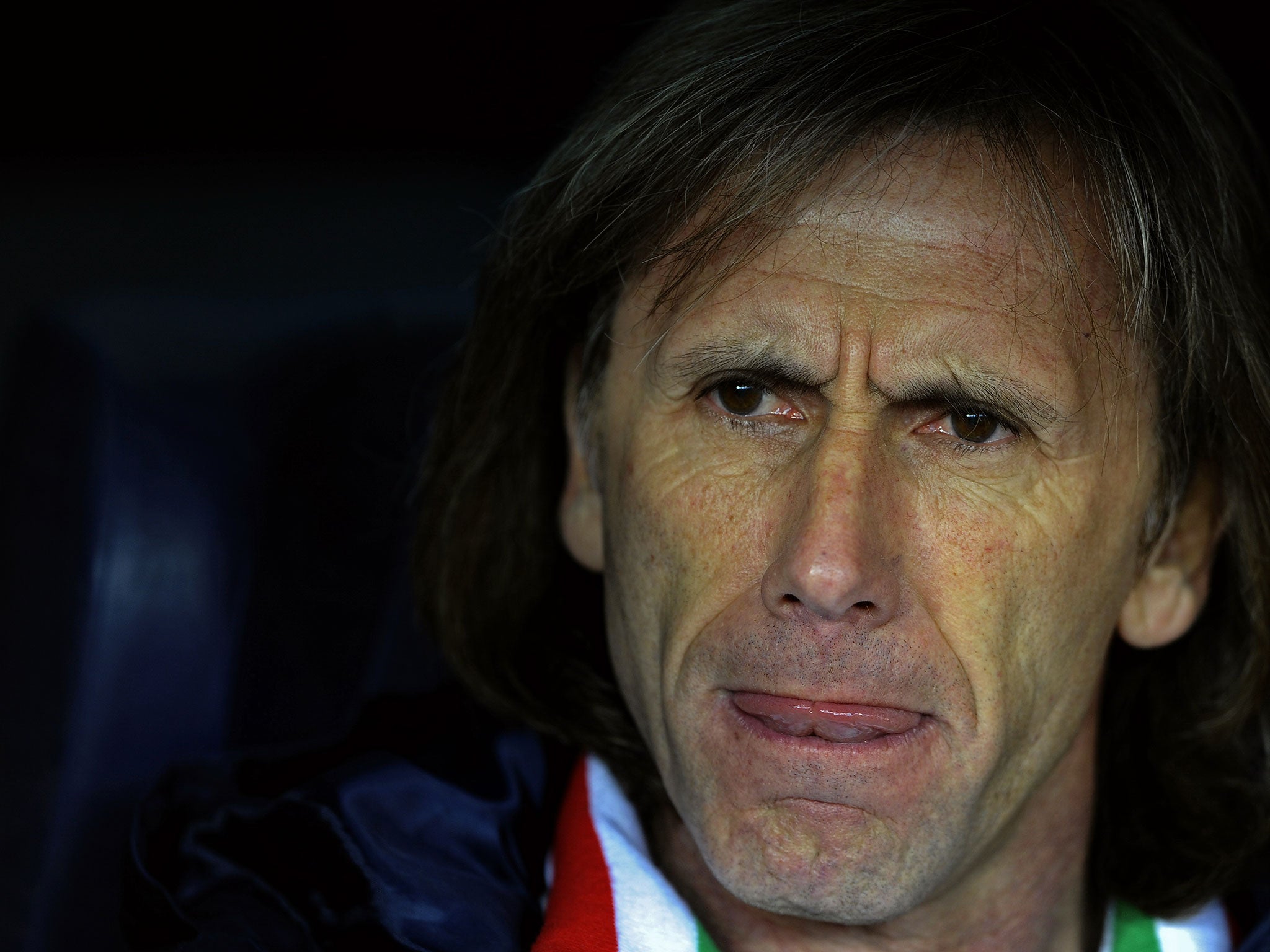Back from the brink: How Peru reached the World Cup to complete rebirth of a South American footballing great
Peru have enjoyed something of a resurgence in recent years and in qualifying for next year's World Cup they have conquered their biggest opponents: themselves

Your support helps us to tell the story
From reproductive rights to climate change to Big Tech, The Independent is on the ground when the story is developing. Whether it's investigating the financials of Elon Musk's pro-Trump PAC or producing our latest documentary, 'The A Word', which shines a light on the American women fighting for reproductive rights, we know how important it is to parse out the facts from the messaging.
At such a critical moment in US history, we need reporters on the ground. Your donation allows us to keep sending journalists to speak to both sides of the story.
The Independent is trusted by Americans across the entire political spectrum. And unlike many other quality news outlets, we choose not to lock Americans out of our reporting and analysis with paywalls. We believe quality journalism should be available to everyone, paid for by those who can afford it.
Your support makes all the difference.In June 1969 General Juan Velasco, the military dictator of Peru, gave a famous speech in Lima. The previous year he had seized power in a bloodless coup, promising to revolutionise the country’s ailing economy, nationalise foreign businesses and restore social justice. Over the following years, the country would be brought to its knees by debt, unrest, food shortages and increasing authoritarianism.
But all that was still to come. As he addressed the nation on television to announce a series of sweeping agrarian reforms, Velasco still fancied himself as an emancipator, a man who would stand up for the downtrodden against the vested interest, for the ordinary Peruvian against the foreign power, for the poor against the rich. “Peasant!” he cried. “The master will no longer feed off your poverty!”
A couple of months later, Peru’s national football team travelled to Argentina to play a crucial World Cup qualifier at the Bombonera in Buenos Aires. Peru had not qualified for a World Cup since the very first in 1930; Argentina had never failed to qualify. But they needed a win.
In a screeching, hostile atmosphere, with increasingly irate Argentina fans hurling objects at them, Peru hung on for a 2-2 draw that sent them to Mexico and eliminated Argentina.
Nor was it a fluke. Under their Brazilian coach Didi, a veteran of the 1958 and 1962 triumphs, they played an attractive 4-2-4 style, spurred by the greatest generation of players in its history. The following year, 1970, they would reach the quarter-finals in Mexico, losing only to that masterful Brazil team. Two years later, Universitario became the first Peruvian team to reach the Copa Libertadores final. Three years after that, they won the Copa America. Three years after that, they qualified for the World Cup again, beating Scotland and drawing with Holland on the way to the third round.
“Peru has let new light and hope into the darkened world of professional football,” wrote the great Brian Glanville. And for a few fleeting years, Peru’s footballers really did embody the national pride and underdog spirit that General Velasco had promised. The peasants of South American football had shown the masters how to do it.
Almost half a century after that famous match in Buenos Aires, Peru returned to La Bombonera with qualification for next year’s finals in Russia still in their hands. They held Lionel Messi's team to a goalless draw and drew with Colombia a few days later to book a spot in the intercontinental play-offs, before beating New Zealand 2-0 to book their spot at next summer's tournament.

For Peru, a country that has often found it hard to believe in itself, it was difficult to shake the sense that history was repeating. In 1985, they had another chance to eliminate Argentina from the World Cup. With nine minutes remaining, they were 2-1 up. Maradona’s Mexico miracle might never have happened. Somehow, in a game Maradona would later describe as the most fearful he had ever felt on a football pitch, Ricardo Gareca smashed the ball in to claim the point that took Argentina to the finals.
Peru have not qualified since, and by a quirk of fate Gareca is now their coach. On taking the job in 2015, Gareca has made it his mission to transform not simply Peru’s football, but its mentality: a heady cocktail of two parts fatalism, one part screeching angst. One of his first moves was to introduce a psychologist to help his players cope with the unique pressure of representing a country with such unrequited weight of expectation.
The results speak for themselves. Successive wins over Uruguay, Bolivia and Ecuador (in Quito’s lung-sapping altitude) helped them to reach the play-off stage. This is a young side of few stars, most of whom play their football in Peru’s Primera Division. Watford’s Andre Carrillo is their only English-based player. Jefferson Farfan, perhaps better known as the most underwhelming 84-rated player in Fifa history, is now a seasoned veteran of 32.

After their crucial victory over New Zealand in the early hours of Thursday morning, which saw them become the 32nd and final team to qualify for Russia 2018, Gareca toasted an emotional victory as he revelled in leading the country to the World Cup for the first time in 36 years.
“I send a greeting to the whole country, I know everyone celebrates,” he said. “We felt a great emotion with the full support of the Peruvian people. The whole country should now be proud.”
There are so many reasons to be optimistic. Peru may never stand alongside the continent’s giants. They may never surpass Brazil or Argentina. But in a way, they have conquered their biggest opponents: themselves.
Join our commenting forum
Join thought-provoking conversations, follow other Independent readers and see their replies
Comments